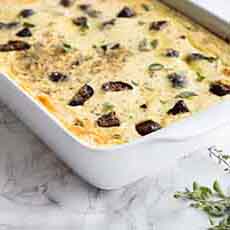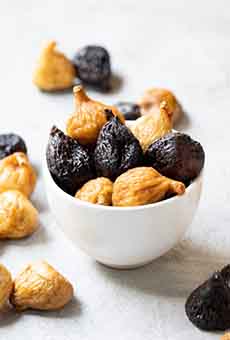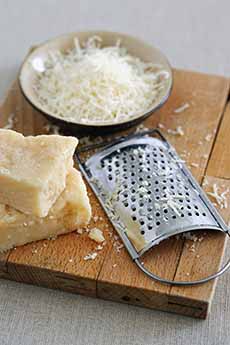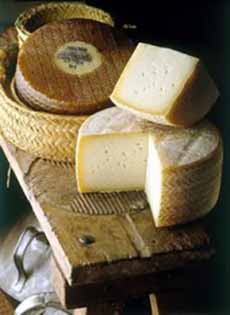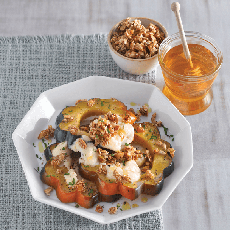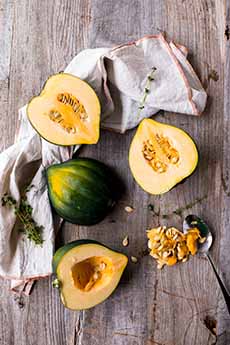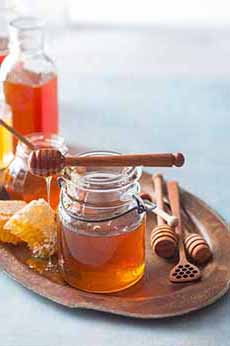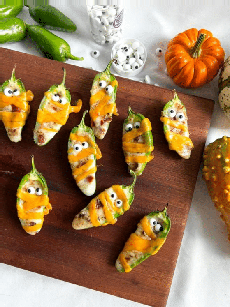Our Top Pick Of The Week, the RIND brand of dried fruit snacks. has a charming backstory. It was created by the great-grandson of a health food pioneer.
In the 1920s, RIND founder Matt Weiss’s great-grandmother, Helen Seitner, opened a natural foods store in Flint, Michigan. Talk about being ahead of her time!
The Stay-Well Health Shop carried fresh produce, whole-grain flour, bulk seeds, nuts, and other wellness foods that focused on the power of whole foods.
RIND fruit snacks are also nutritious whole foods, but in current times, they have a secondary mission as well: to minimize food waste (more about that in a moment).
The brand also has an anti-hunger initiative called Love Is RIND. In partnership with local and national organizations, RIND has donated 35,000 bags of snacks to kids in need.
It’s a feel-good brand, as well as a taste-good one.
HOW RIND REDUCES FOOD WASTE
According to Feeding America and numerous other sources, food waste in the U.S. is a huge problem.
It’s not only for the waste it dumps into landfill, the labor and expense wasted in growing and bringing it to market, and the amount of water used and greenhouse gas expended in growing and processing it.
It’s also food that could have gone to feed America’s hungry.
By making dried fruit snacks that include rinds and peels, RIND saved 340,000 pounds of food waste in 2021 and aims to save 1 million pounds in 2022.
These are sustainable snacks as well as nutritious ones. RIND retains the nutrients that are in the peels and rinds, which are often the healthiest part of the fruit.
RIND snacks are made with the entire fruit, including the oft-discarded peel. There is only one ingredient in RIND: sliced, dehydrated fruit.
This “recipe” not only saves a lot of peel from landfill. It also saves fruits that would be headed for the landfill because they’re misshapen, discolored, or bruised so customers won’t buy them.
The latter is a big problem: Each year, 10 million pounds of tasty and nutritious but cosmetically imperfect produce is thrown away (read the whole article).
(Globally, 1.3 billion tons of produced food goes uneaten every year!)
We would hope that produce growers and local governments would get together to distribute these perfectly edible foods to the hungry, but so far they haven’t connected. (Why not write to your local growers and officials?)
RIND FLAVORS
The chewy fruit chips are high in fiber, flavonoids (antioxidants), and vitamin C, with a satisfying crunch.
For a product with no added sugar, we enjoyed it very much; that is to say, we’re a big fan. There’s an entire fruit department worth of flavors:
Apple Chips (photo #6)
Coco-Melon (mix of coconut and watermelon)
Coconut Crisps
Dark Cocoa Sea Salt Coconut Crisps (photo #5)
Kiwi Chips
Orange Chips
Orchard Chips (mix of apple, peach, and persimmon)
Peach Chips
Straw-Perry Chips (mix of apple, pear, and strawberry—photo #6)
Tropical Chips (mix of banana, honeydew, and mandarin)
WAYS TO USE RIND SNACKS
RIND is more than a grab-and-go, or sit-and-eat, snack. The fruit can be used as:
Breakfast garnishes: cereal, pancakes, waffles
Dessert garnishes: especially the orange coconut chips (photo #2)
Dippers: for yogurt and other healthy dips
Drink garnishes: cocktails, cider, mulled wine, and other beverages (photos #1 and #3)
Toast, English muffin and bagel toppers: with cream cheese and an optional honey drizzle (photo #4)
Trail mix
GET YOUR RIND SNACKS
Try them yourself, and buy them for healthful* stocking stuffers!
You can buy them online at RindSnacks.com.
Here’s a store locator.
The brand is also available on Amazon.
________________
*“Healthy” vs. “healthful”: The Difference. Healthy is an adjective used to describe someone or something (animal, plant) in good health. Healthful is an adjective used to describe something as health-giving or abetting good health.
|
|
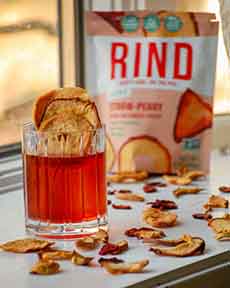
[1] RIND is a delicious snack from the bag, and also a garnish for drinks and desserts (all photos © RIND Snacks).

[2] RIND orange and coconut chips used as a fruitcake topping (or carrot cake, pound cake, or other cake).

[3] Pineapple rings garnish a smoothie.

[4] Apple chips on a plain bagel and cream cheese, with a honey drizzle. The chips are also great on toast and English muffins.

[5] Coconut crisps are available plain or with cocoa and sea salt.
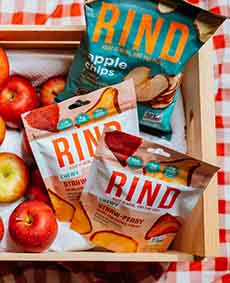
[6] Bags of Apple, Straw-Perry.
|



